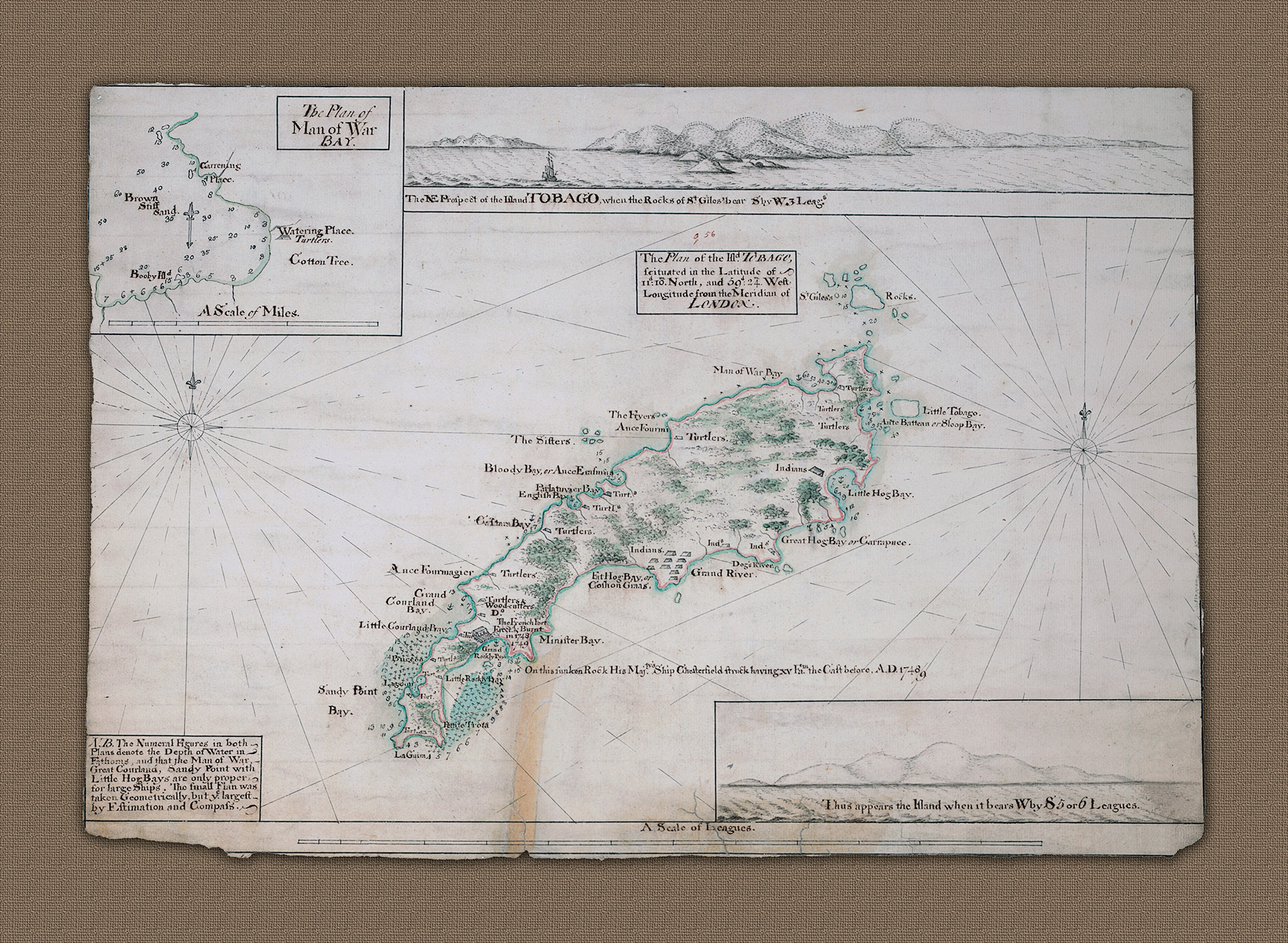Of note is the inclusion of indigenous Indian settlements in various locations. The map also depicts a vast number of 'Turtlers' and some 'wood-cutters'. The main inland territory is shown as uninhabited bush land. It may have been drawn anytime after 1749 but is unlikely to have been produced much later than 1760.
The island of Tobago has a long history of conflict and this beautiful, previously unpublished chart, contains many references to its history. The island was first settled by Courtlanders (subjects of the Polish-Lithuanian Commonwealth) in 1654 but was, over the next 200 years, coveted by the Dutch, English, Swedish and the French for it's rich resources which included sugar, tobacco, coffee, cotton, ginger, indigo, rum, cocoa, tortoise shells, tropical birds and their feathers. Indeed, the island changed hands no less than 33 times in the 300 years since the British had first put foot on the Island up until it finally became (along with neighbouring Trinidad) a British Crown Colony in 1889.
At the time of it's making the map depicts the island under British control. The principle concern of the plan is to inform as to hydrographical information. Detail of safe anchorages, dangerous rocks and shoals are drawn. There is even a reference to the rock upon which HMS Chesterfield struck in 1748 or 1749. There is a sailing view provided on the bottom of the chart showing the Island from 6 leagues off, west by South. Another view with a North East aspect is included at the top of the chart. Of particular interest is that this chart or plan includes a great deal of information which is shared in Thomas Jeffery's 1775 map of the Island 'Tobago from actual surveys and observations' published by Sayer & Bennet, London. Specifically, both charts detail the following information in Man of War Bay; 'careening place' ('pyrates' careening place on Jeffreys'); The 'old cotton tree'; the 'Brown Stiff Sand' ('Black Clay and Sand' on Jefferys') and the 'Watering Place'. All of which of course raises the possibility that this previously unpublished plan is one of the 'Actual Surveys and Observations' Jefferys drew upon in the construction of his later chart. This plan may have been drawn anytime after 1749 but is unlikely to have been produced much later than 1760.
This beautiful plan of Tobago includes an inset of The Plan of Man of War Bay. The plan makes reference to the island's history through the inclusion the (French) fort located at Great Rocky Bay (previously James Bay), Grand Courtland Bay, and Minister Bay (sometimes known by the Dutch name of 'Luggars Bay'). Of note is the inclusion of indigenous Indian settlements in various locations. The map also depicts a vast number of 'Turtlers' and some 'wood-cutters'. The main inland territory is shown as uninhabited bush land. It may have been drawn anytime after 1749 but is unlikely to have been produced much later than 1760.


